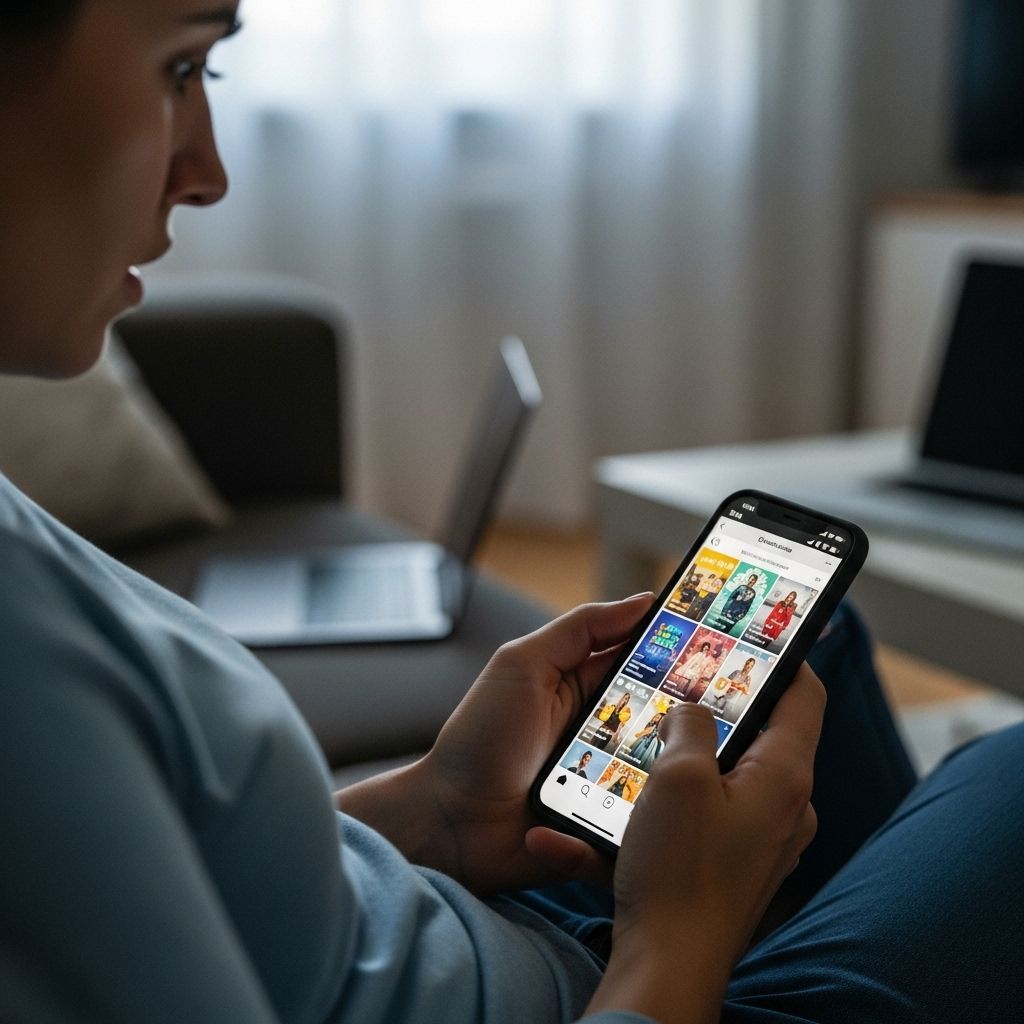Screen Time Management for Social Comparison Anxiety: Strategies & Impacts on Mental Health
Break free from endless scrolling to reclaim confidence and genuine connections.

Table of Contents
- Understanding Social Comparison Anxiety
- The Role of Screen Time in Social Comparison
- Psychological Impact of Excessive Screen Use
- Signs and Symptoms of Social Comparison Anxiety
- Evidence-Based Screen Time Management Strategies
- Support for Children and Adolescents
- Tools and Apps for Screen Time Management
- When to Seek Professional Help
- Frequently Asked Questions (FAQ)
- Conclusion
Understanding Social Comparison Anxiety
Social comparison anxiety refers to the distress people experience when they compare themselves to others and perceive themselves as lacking. In the digital age, this phenomenon is amplified by social media, where curated highlights of peers’ lives are constantly visible, fostering unrealistic benchmarks for personal success, appearance, and happiness. This type of anxiety can erode self-esteem, fuel feelings of inadequacy, and significantly impact mental health, especially among adolescents and young adults.
The Role of Screen Time in Social Comparison
The proliferation of smartphones and social media platforms has dramatically increased both screen time and opportunities for social comparison. Adolescents may check their social media feeds over a hundred times daily, exposing themselves to a relentless stream of peer content that often portrays only the best moments. This constant exposure can create an illusion that others are happier, more successful, or more socially active, fueling a cycle of envy, self-doubt, and anxiety.
How Social Media Encourages Comparison
- Curated content: Posts are often edited or staged to present an idealized version of life.
- Highlight reels: Users see others’ achievements and happy moments, but rarely their struggles.
- Fear of missing out (FOMO): Constant updates about social events can make users feel excluded.
- Instant feedback: Likes, comments, and shares provide immediate, often addictive, social validation.
These dynamics can make digital environments especially toxic for individuals prone to social comparison, as the boundary between online and offline self-worth becomes blurred.
Psychological Impact of Excessive Screen Use
Excessive screen time, particularly on social media, is linked to a range of negative psychological outcomes:
- Increased Anxiety and Depression: Frequent social media use is associated with higher rates of anxiety and depression, especially when users engage in passive consumption (scrolling without interacting).
- Low Self-Esteem: Constant exposure to idealized images can diminish self-worth and foster a persistent sense of inadequacy.
- Sleep Disruption: Blue light from screens interferes with circadian rhythms, leading to poor sleep, which exacerbates mood disorders and emotional regulation difficulties.
- Social Isolation: Despite the promise of connection, over-reliance on digital communication can erode the quality of real-world relationships, leaving individuals feeling lonelier and more disconnected.
- Impaired Social Skills: Reduced face-to-face interaction can stunt the development of crucial social skills, making in-person interactions more anxiety-provoking.
Children and adolescents are particularly vulnerable, as their brains are still developing and they are learning to navigate social complexities.
Signs and Symptoms of Social Comparison Anxiety
Recognizing the signs of social comparison anxiety is crucial for early intervention. Common symptoms include:
- Frequent checking of social media for updates or validation
- Feelings of envy or inadequacy after viewing others’ posts
- Avoidance of social situations or reluctance to participate in group activities
- Difficulty initiating or maintaining conversations offline
- Changes in mood, such as increased irritability, sadness, or anxiety
- Compulsive need to present a “perfect” image online
- Disturbed sleep patterns linked to late-night screen use
Left unaddressed, these behaviors can become entrenched, making it increasingly difficult for individuals to form healthy, fulfilling relationships offline.
Evidence-Based Screen Time Management Strategies
Managing screen time effectively can mitigate the negative effects of social comparison anxiety. Research and clinical practice suggest several evidence-based approaches:
Set Clear Boundaries
- Daily Limits: Establish and enforce daily screen time limits for leisure activities, especially social media use.
- Screen-Free Zones: Designate certain areas of the home (e.g., bedrooms, dining table) as screen-free to encourage offline interaction.
- Scheduled Breaks: Introduce regular breaks from screens throughout the day, particularly before bedtime.
Promote Intentional Use
- Purpose-Driven Engagement: Encourage using screens for specific, meaningful activities rather than passive scrolling.
- Curate Content: Follow accounts that promote positivity and unfollow or mute those that trigger negative comparisons.
Encourage Offline Activities
- Unstructured Play: Prioritize time for creative, imaginative play and problem-solving activities without screens.
- Face-to-Face Interaction: Make time for in-person socializing with friends and family to build real-world social skills and resilience.
- Physical Activity: Engage in regular exercise, which has been shown to improve mood and reduce anxiety.
Model Healthy Behaviors
- Parental Example: Adults should model balanced screen habits, as children often imitate parental behavior.
- Family Screen Time Agreements: Develop family rules around screen use that everyone agrees to follow.
Studies have shown that even short breaks or reductions in social media use can lead to improved mood, reduced loneliness, and lower anxiety levels.
Support for Children and Adolescents
Children and teens are especially susceptible to the negative effects of excessive screen time and social comparison. Support strategies include:
- Open Communication: Foster an environment where children feel comfortable discussing their online experiences and emotions.
- Education on Media Literacy: Teach children to critically evaluate online content and recognize that social media often presents a distorted reality.
- Encouragement of Diverse Interests: Help children cultivate hobbies and interests outside of screens to build self-esteem and a sense of identity.
- https://nationalsocialanxietycenter.com/2024/11/18/digital-drama-screens-social-media-social-anxiety/
- https://jamanetwork.com/journals/jamanetworkopen/fullarticle/2821176
- https://www.abundancetherapycenter.com/blog/understanding-the-impact-of-screen-time-on-mental-health
- https://pmc.ncbi.nlm.nih.gov/articles/PMC11846175/
- https://www.bakercenter.org/screentime-1
- https://www.cdc.gov/pcd/issues/2025/24_0537.htm
- https://www.nea.org/nea-today/all-news-articles/all-scrolling-how-screen-time-impacts-students
- https://www.ncbi.nlm.nih.gov/books/NBK603429/
References
Read full bio of medha deb












